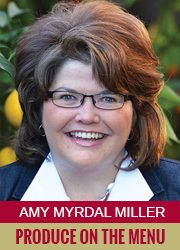 In the 1990s, in the mind of the consumer, “healthy” meant low fat. In the early 2000s, during the Atkins Diet craze, it meant low carb. While the Food and Drug Administration (FDA) never issued regulations for low-carb claims, both low fat and low carb were claims that could be quantified or measured. Today, consumers are defining healthy in ways that can be very broadly interpreted and loosely associated with beneficial nutrition and health outcomes.
In the 1990s, in the mind of the consumer, “healthy” meant low fat. In the early 2000s, during the Atkins Diet craze, it meant low carb. While the Food and Drug Administration (FDA) never issued regulations for low-carb claims, both low fat and low carb were claims that could be quantified or measured. Today, consumers are defining healthy in ways that can be very broadly interpreted and loosely associated with beneficial nutrition and health outcomes.
Claims like clean, natural, real and sustainable lead consumers to believe they are making a better choice. But therein lies the issue. Are foods and menus that carry these terms better for our health? For the planet? For a company’s bottom line?
According to data from Mintel, 59 percent of consumers believe “fewer ingredients” means a healthier product, and 37 percent of these consumers are willing to pay more for these products compared to their conventional counterparts. This is wonderful news for fresh and fresh-cut produce items.
In addition to fewer ingredients, consumers are also looking for more “natural” products. The Mintel study showed 84 percent of shoppers seek out “natural” products thinking they are less processed and therefore healthier. But are White Cheddar Simply Natural Cheetos really better for you compared to regular Cheetos? Ah, the magic of marketing….
What about the shoppers and chefs who fervently believe organic products are healthier than conventional? While there may be differences in soil health, depending on production practices and location, research has never shown a significant difference in the nutrient content of organic and conventional produce. What research does show is that people who eat the most produce — in all forms, including frozen, canned, juice, dried and fresh, produced by any production method — have the lowest risk of heart disease, the biggest killer in this country.
If you push a shopper to answer the question, “Why do you believe organic is better for you?” he/she will likely answer, “Oh, because there are no pesticides.” The average shopper has no clue that farmers who use organic production methods also use pesticides, a fact few organic marketers will ever admit.
According to data from Mintel, 59 percent of consumers believe “fewer ingredients” means a healthier product, and 37 percent of these consumers are willing to pay more for these products…
How we talk about pesticides and produce is critically important. Research published last fall in Nutrition Today shows low-income shoppers are less likely to purchase any fresh produce if they have seen a specific fruit or vegetable on a list like the Environmental Working Group’s “Dirty Dozen.” While low-income shoppers have a favorable opinion of organic produce, they are less likely to pay more for organic produce. Furthermore, they will forgo buying any fruits or vegetables due to the negative influence of messages about conventional produce and pesticides. We need to stop making shoppers agonize over the type of produce to buy and simply encourage them to buy and eat more of all types of produce in all forms in ways that are convenient and enjoyable.
Another marketing term that keeps rearing its ugly head is “real” food. Consumers equate “real” with artisan, authentic, natural, minimally processed — more terms that are loosely defined and regulated. Who should own “real” food claims? Fresh and fresh-cut produce grower/shipper/marketers, that’s who.
In fact, if the produce industry wants to influence the next consumer definition of healthy, more of us need to remind shoppers and diners that fruits and vegetables are real, clean, natural, minimally processed, sustainable foods. Stop comparing production methods. Stop comparing the nutrients in one fruit to another, and start celebrating the fact that we need to promote greater purchase and consumption of all produce in all forms.
Finally, we have to remember that health doesn’t sell as well as flavor and enjoyment. Don’t talk about why people should eat produce. Let’s talk about why people want to eat produce: Sweet, juicy peaches. Creamy, comforting baked potatoes. Aromatic strawberries. Crisp, cool lettuce. Sweet, tender corn-on-the cob. Tangy, sweet orange juice. Tempting tempura green beans.
This is real food. But it’s also really good food.
On that note, I’m going to go enjoy a clean, raw, natural, real, sustainable, vegan, gluten-free, minimally processed snack with no artificial flavors, colors or preservatives. It’s called an apple — a big, juicy, beautiful, crisp, sweet, refreshing, satisfying apple.
Amy Myrdal Miller, MS, RDN, FAND is a farmer’s daughter from North
Dakota, award-winning dietitian, culinary nutrition expert, and founder and president of Farmer’s Daughter Consulting, Inc. Learn more about her business at www.farmersdaughterconsulting.com. Follow her insights on food and flavor issues on Twitter @AmyMyrdalMiller.




